How To Sell More to Each Customer (w/ a Ladder System)
When I started selling at craft shows, I added anything I could make to my table in hopes of selling to more shoppers.
Did my pajama bottoms help me sell to people who weren’t interested in a handbag?
Yes.
But did pajamas help me:
- build a handbag brand
- increase the perceived value of my handbags
- Turn a pajama customer into a handbag customer
NO.
Each product on my table stood alone.
Very rarely did I sell more than one item to a customer.
When a shopper found a handbag they liked, I didn’t have the matching laptop case, makeup bag, or coin purse they could use with the bag.
And when a shopper found a pair of pajama bottoms they liked, I didn’t have the matching top, slippers, sleep mask, or bathrobe they could wear with the pajama bottoms.
If you’re after one-time sales, go for a wide selection.
Creating a variety of products for a variety of people will help you sell to more people.
But if you want:
>> to sell more to each customer
>> customers to come back and buy again
>> to build a brand people remember and talk about
You need to think about how all of your products relate to each other.
To explain, I’d like to use an analogy.
Imagine a ladder:

Steps of the ladder
The steps on the ladder represent the different types of products you offer.
For example:
- Bathrobes
- Pajama bottoms
- Pajama tops
- Slippers
- Sleep masks
- Scrunchies
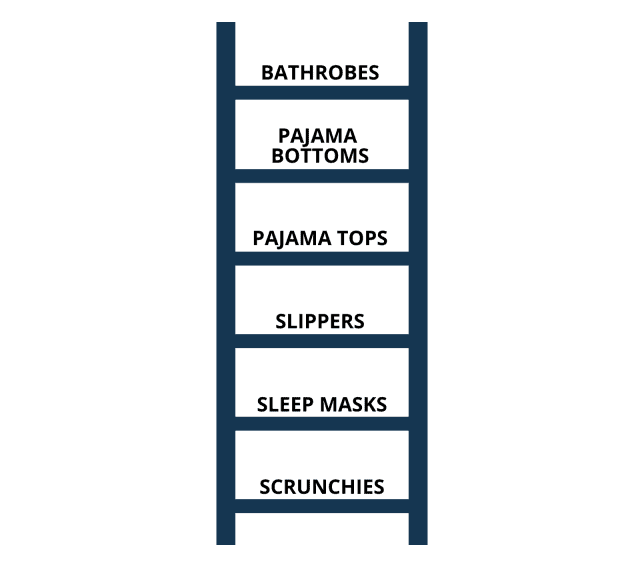
Within each step, there can be variations of those products, to give customers options if they’re interested in a particular type of product (because you need to think about the customer journey to boost sales).
For example:
- Bathrobes: long, short, hooded
- Pajama bottoms: pants, shorts
- Pajama tops: long-sleeved, short-sleeved, tanks
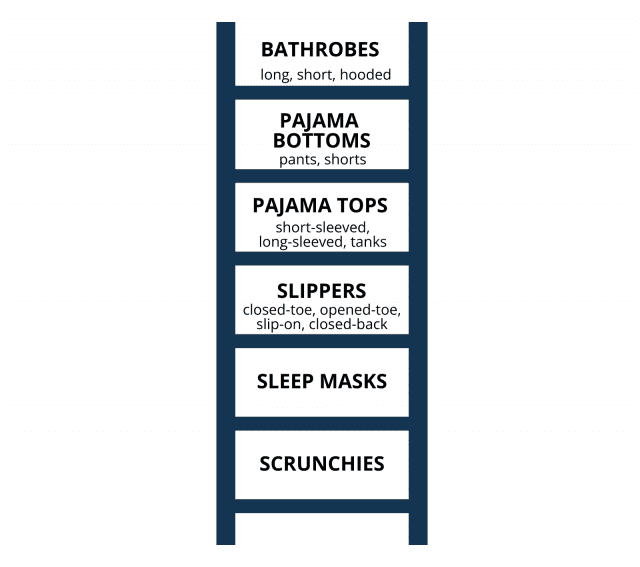
The options offered in each type of product should also relate to each other and work together.
For example:
- Bathrobes:
- terrycloth (in red, grey, and blue)
- silk (in pink, blue, and red floral prints)
- fleece (in solid colors)
- Pajama bottoms:
- terrycloth (in red, grey, and blue)
- silk (in pink, blue, and red floral prints)
- fleece (in solid colors)
- Pajama tops:
- terrycloth (in red, grey, and blue)
- silk (in pink, blue, and red floral prints)
- fleece (in solid colors)
This type of product alignment allows customers to mix and match and encourages them to buy multiple items.
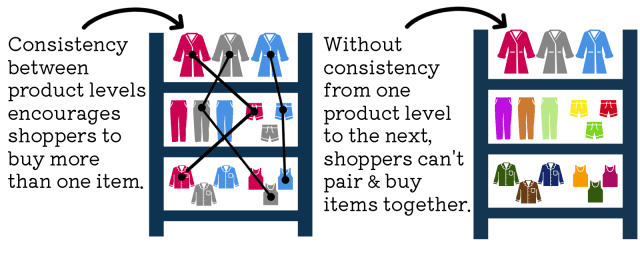
All of your products should have something in common, and have the potential to be used by the same person.
For example:
>> Art, pillows, and a throw are all home decor items that can be used/displayed in the same room.
>> Bags, laptop covers, and a sunglass case are all items that carry and protect our belongings when we leave the house.
>> Pajamas, slippers, and bathrobes are items that are commonly worn together and are all considered sleep/loungewear.
On the other hand:
Bags, pajamas, and aprons don’t have a common theme. Someone who’s carrying a purse isn’t also going to be wearing pajamas and an apron.
Bottom of the ladder
The products at the bottom of your ladder are:
- entry-level products (learn more about entry-level products here) and
- add-on products (learn more about add-on products here).
These items are lower price points and are an easy purchase for new customers to make.
They allow people who are interested in your main pieces (but aren’t quite ready to spend that much money) to buy something from you.
Items on the lower ladder should also have the potential to spark the sale of a higher-ladder product down the road.
For example, when someone purchases a pair of terrycloth slippers, they’re reminded of the matching terrycloth bathrobe every time they slip on the soft, cozy slippers.
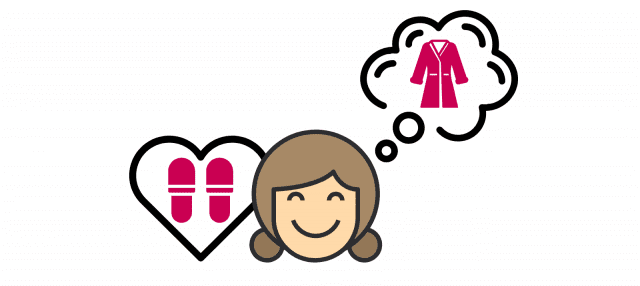
On the other hand, if someone purchases a pair of terrycloth pajamas, they’re NOT going to think about the leather bag I was also selling.
The pajamas are very unlikely to spark a bag sale in the future.
Lower-ladder items should also encourage multi-item purchases.
For example, someone purchasing a terrycloth bathrobe (top of the ladder item) may also add terrycloth slippers and a terrycloth scrunchie (bottom of the ladder items) to their purchase.
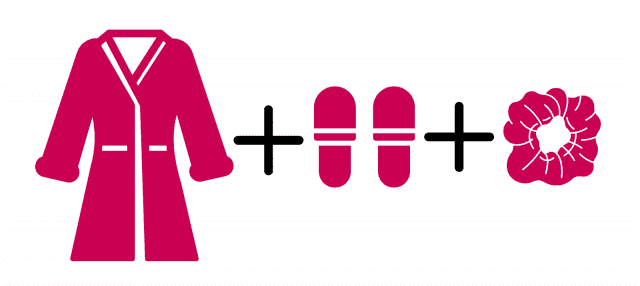
These are small, lower-priced items that are easy to add to a purchase, would be used together, and/or would make a great gift if purchased together.
Top of the ladder
The products at the top of your ladder are your main products.
They may also include your upsell products; the items customers upgrade to if they want to spend more, or when they’re ready to come back and buy again (learn more about upsell products here).
They’re your highest price points and are typically the products you strive to sell to the majority of your customers.
The products at the top of your ladder should relate to the products in the middle and at the bottom of your ladder.
Someone purchasing an item from the top of the ladder should be enticed to add products at the middle/bottom of the ladder to their order.
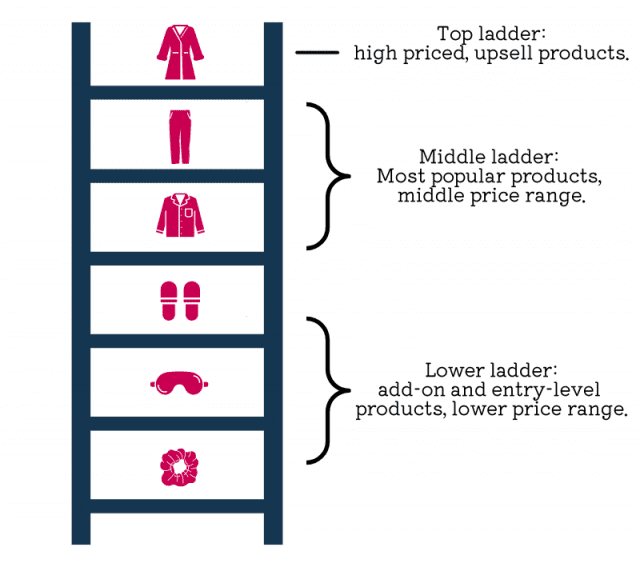
Middle of the ladder
The products in the middle of your ladder are likely to be the “meat and potatoes” of your business.
They sit in the middle of your price range and the majority of your customers buy these items.
For example, pajama bottoms and pajama tops would be the middle of my ladder.
If people want to spend more or upgrade, they would buy a bathrobe.
Middle-ladder products still relate to, and can be used with, the items at the bottom of the ladder.
For example, someone who purchases a pajama set may also buy a pair of slippers to go with them.
2-way ladder
No matter which product captures a consumer’s attention first, they should be able to go up or down the ladder to add items to their purchase or make a future purchase.
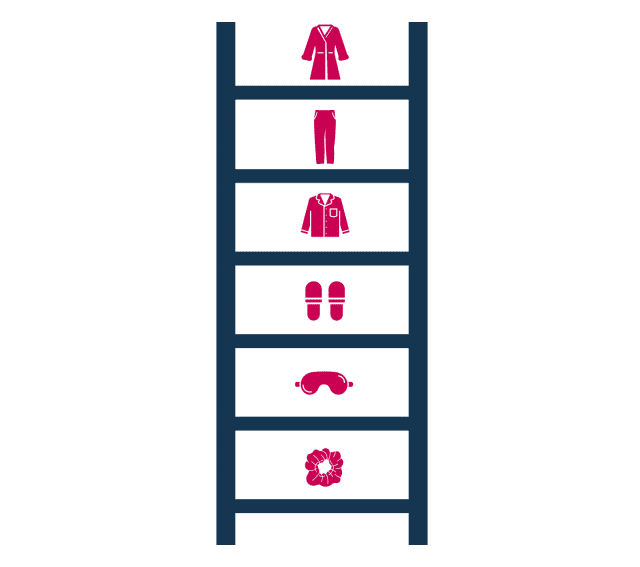
For example, if someone is interested in a pair of pajama bottoms, they can go up the ladder and pair a bathrobe with them, or go down the ladder and pair a sleep mask with them.
If my products are disjointed, the same customer won’t be able to buy other items higher or lower on my ladder.
For example, if I offer pajama bottoms, bags, aprons, and mittens, a person buying pajamas has nowhere else to go. They’re not going to buy a bag, or an apron, or a pair of mittens to go with those pajamas.
So my customer stays stuck on that rung of the ladder.
Apply to your business
Set all your products on a table, or look at them in your online shop.
Do you offer:
- products at a low, medium, and high price point?
- lower-priced products that will encourage higher-priced sales in the future?
- lower-priced products that can be added to a sale to increase your sales per transaction?
- higher priced products that can be used with your lower priced products?
Assess whether each product has buddies.
>> Do your blue pair of earrings have a matching blue necklace, bracelet, and ring?
>> Does your blue piece of art have a small, medium, and large version that can be hung together?
>> Does your lavender bar of soap have a lavender bath salt, bubble bath, and candle to create a lavender bathing experience?
Don’t try to cheat the system. Technically, any two products can be purchased together.
I may randomly need a new pair of pajama bottoms and a new purse at the same time and buy them in the same purchase.
But that’s the exception, not the rule.
Most shoppers are focused on one shopping task at a time.
Shopping for a new outfit OR shopping for living room decor
Thoughtfully consider which items may need to be phased out of your product selection, and what type of products you may need to introduce to create a functioning ladder system.

Hey, I’m Erin 🙂 I write about small business and craft show techniques I’ve learned from being a small business owner for almost 2 decades, selling at dozens of craft shows, and earning a diploma in Visual Communication Design. I hope you find my advice helpful!

What a great way to describe a “funnel” for product sales. Sometimes, I get so tired of hearing about funnels and try to think of another way to explain it to clients.
Thanks for reading Aleeah! That’s so true, I hadn’t thought about the ladder as a funnel system, but it definitely is!
~Erin
I think this is a great explanation and live the example. For some reason, I can’t translate it to other areas. could you provide other, (brief), examples?